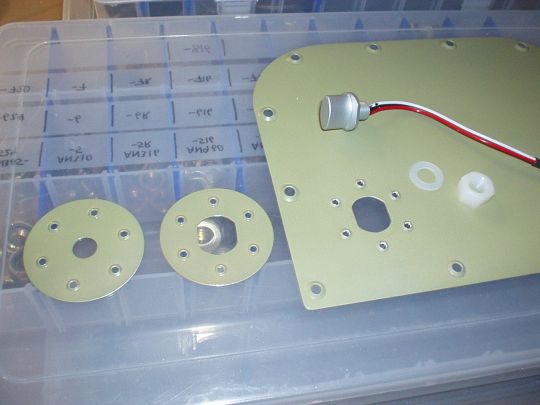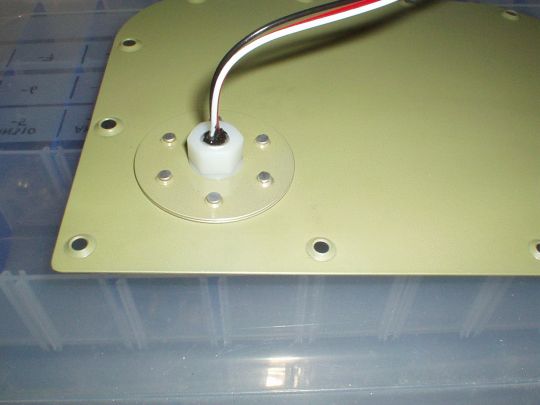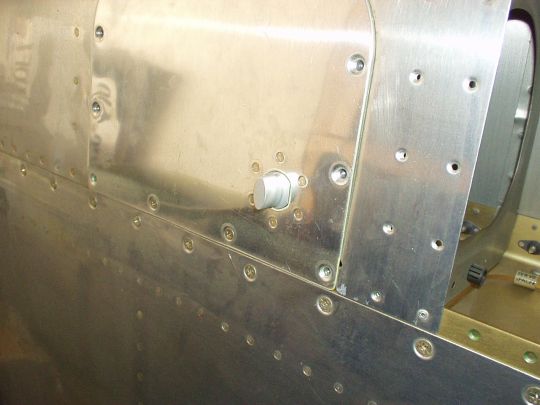|
  

OAT Probe
Running Total Hours:
0.0
 | 2009.05.19: (0.0)
The outside air temperature (OAT) probe is often overlooked but is an
important air data sensor. In conjunction with the pitot-static
data, OAT is used in determining such essential parameters as density
altitude and true airspeed, and for recognizing potential icing
conditions. In my case,
the OAT probe will be part of the Advanced Flight Systems EFIS
package, but similarly there should be one as part of any other glass
cockpit package, or as a discrete instrument in a traditional cockpit.
PROBE LOCATION
This is an area where many RV folks seem to make some silly
decisions. To state the obvious, the purpose of the outside air
temperature probe is to measure the outside air temperature. In
an attempt to reduce drag and/or facilitate installation, some people have
mounted their OAT probes in the cabin air scoops, on the sides of the
fuselage, in various locations
inside the fuselage and wings, and even inside the cowling! No
surprise, these installations tend to produce highly inaccurate
readings, usually reading high due to proximity to sources of heat
such as the engine, exhaust stream, direct sunlight, cabin heat, avionics, or even the meat bag at the
controls.
I'd like to do a better job here. So at a first order, the probe
should nominally be placed in the ambient air, away from any sources of heat, and out of
direct sun light. A location under the wing, sufficiently
outboard to avoid exhaust heat, should fit the bill.
A second order consideration is adiabatic heating of the oncoming air
as it is brought to rest and compresses at the front of the
probe. But this effect is relatively minor at our speed range,
and is also predictable and can be compensated for numerically.
The relationship is as follows:
TAT = SAT + (K × TAS² / 7592)
Where:
Total Air Temperature (TAT), a.k.a. Indicated Air Temperature (IAT) or
Ram Air Temperature (RAT), is the actual temperature that will be
measured by the probe and includes the ram air heating effect.
Measured in degrees Celsius.
Static Air Temperature (SAT), a.k.a. Outside Air Temperature (OAT), is
the true temperature of the ambient air. Measured in degrees
Celsius.
K is the recovery factor of the probe. This would generally be
in the range of 0.8 to 0.9 according to Kevin Horton, RV-8 builder and
engineering test pilot.
And True Airspeed (TAS) is in knots.
So, even at 180 KTAS, the TAT will only read approximately 4°C higher
than the true OAT, so it is a relatively minor effect in the RV's
speed range. And, again, it can also be mostly eliminated
numerically.
Alternatively, the probe could be installed in a location of mosly
stagnant air. That would reduce or eliminate the ram air heating
effect, but would also cause the indicated OAT readings to respond
more slowly when the actual OAT does change (such as with altitude
changes).
My plan is to install the OAT probe in the airstream, under the wing
as described above. I can compensate for the ram air heating
effect, knowing that it's there. Or better yet, I wonder if the
Advanced Flight System EFIS and other similar instruments are already
smart enough to compensate for the effect numerically in software, knowing that
the probe is installed in a location exposed to the airstream.
I'll have to find out if that's the case. |
 | 2009.09.10: (0.0)
I purchased the probe (AFS "new style" OAT probe, p/n 40306)
from SteinAir. After much deliberation I ended up installing it
in second access panel in the right wing (I will likely make
provisions for a second OAT probe in the same location in the left
wing). Besides this being a reasonably good location by the
criteria described above, mounting the OAT probe in an access panel
avoids putting more holes in the wing skin. I'll use a connector
(type TBD) to connect the probe's leads to the wing wiring harness so
that the access panel will still be easily removable. I used two
additional pieces of 0.032" aluminum to create a recess in which
the OAT probe's mounting flange will nest very close to flush.
This will 1) reduce drag, and 2) serve as an anti-rotation mechanism,
as the recess has two flat sides to match those on the probe's
mounting flange.


 |

  
|
|